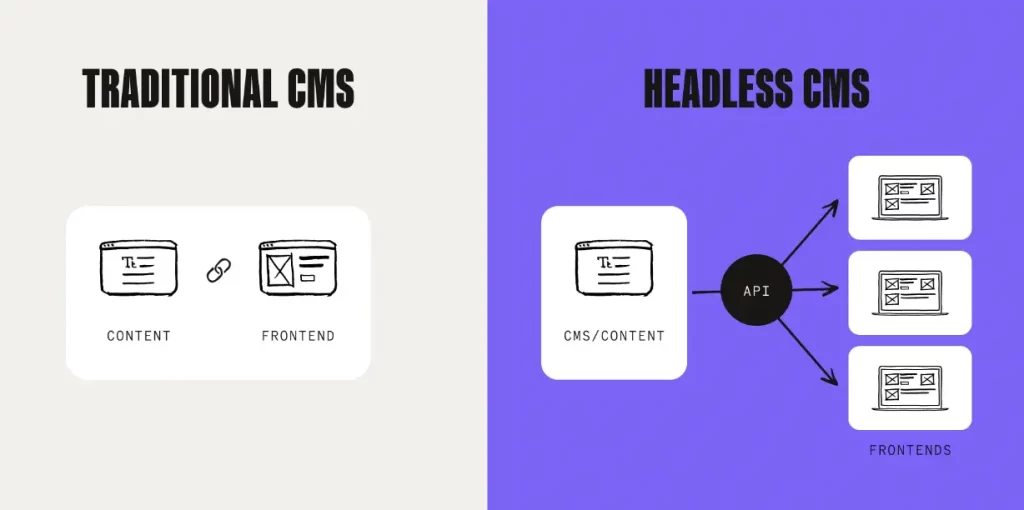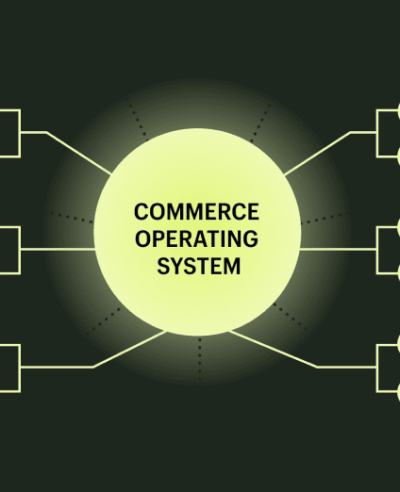- SolutionsGo BackShopify PlusStay ahead of the curve with top-tier e-commerce techCommerce OperationsGrow your e-commerce business and marketplaceAI for CommerceReinvent commerce in the AI ageIn-house SpecialistsTop e-commerce specialists in a dedicated team setupDigital ServicesCustom services for brands
- Work
- Insights
- Join us
- SolutionsGo BackShopify PlusStay ahead of the curve with top-tier e-commerce techCommerce OperationsGrow your e-commerce business and marketplaceAI for CommerceReinvent commerce in the AI ageIn-house SpecialistsTop e-commerce specialists in a dedicated team setupDigital ServicesCustom services for brands
- Work
- Insights
- Join us
- fr
- en
Headless architecture: the key to omnichannel and customer engagement in 2024

Among the notable innovations in this field, headless commerce stands out. But what is headless commerce, and why is it so crucial for modern businesses?
Definition of headless commerce
Benefits of headless commerce
Headless commerce is an architecture that separates the front-end from the back-end, offering greater flexibility and increased customization of the user experience. Unlike traditional CMS platforms, where content management and the user interface are closely tied, a headless CMS delivers content as data via an API. This provides greater flexibility for front-end development, better scalability, and faster load times.
With headless commerce, the front-end can be developed independently of the back-end, making updates and changes easier without affecting the entire system. This approach also allows for easier integration with other technologies and platforms.

Benefits of headless architecture
Personalized user experience and flexibility
With Headless architecture, companies have complete freedom to design and customize the user interface without the constraints of monolithic systems. This allows for the creation of unique experiences that captivate users and strengthen the brand. For example, Offlimits Cereal used a Headless solution to create a playful shopping experience, simulating a vending machine, which improved user engagement and made the purchasing process easier
Improved performance
Websites using a Headless architecture load faster, which is essential for retaining users’ attention. A study by WebsiteBuilderExpert showed that 64% of smartphone users expect pages to load in less than four seconds, and 40% of consumers abandon a site if it doesn’t load within three seconds. By separating the front-end from the back-end, changes to the user interface do not affect the overall performance of the site
Integration and scalability
Headless architecture facilitates integration with various tools and services via APIs. Whether it’s for adding new features or adapting to new channels, this flexibility allows businesses to grow and innovate without being constrained by their technological infrastructure. Airbnb uses a Headless architecture to customize user experiences across different platforms, ensuring consistency and smoothness across all channels.
How to ensure seamless omnichannel experience
The result? A significant increase in conversion rates, up to 42% on average, and improved customer retention. By adopting headless commerce, you control every interaction and ensure a flawless omnichannel experience, essential to remaining competitive in today’s market.
However, this approach can also introduce additional complexities. Managing multiple interfaces and the need to ensure consistency across all platforms can increase the development and maintenance workload.
For those considering this transition, it is crucial to fully understand the benefits and challenges associated in order to maximize return on investment.
Best headless commerce platforms
The ecosystem of “headless” services is expanding, becoming increasingly accessible and user-friendly. Finding a true API-focused headless commerce platform that meets your needs without breaking the bank is no easy task. Many providers have jumped on this trend, proudly displaying “API-first” on their banners, but their interpretation of “headless” can sometimes be overstated. Here’s a selection of the best headless commerce platforms that stand out for their efficiency and genuine API-first approach:
Shopify offers a user-friendly interface to set up and customize storefronts, manage products, process orders, and integrate various payment gateways and shipping providers. It’s a robust solution for businesses of all sizes. Salesforce
Commerce Cloud provides powerful features for product management, merchandising, marketing campaigns, and customer interactions. Its flexibility and integration with other Salesforce services make it a top choice for companies seeking a comprehensive solution.
Vendure is an open-source e-commerce framework built with TypeScript and GraphQL. Designed for developers, it allows the creation of flexible and scalable e-commerce sites, offering great customization freedom.
SAP Commerce Cloud is an omnichannel e-commerce platform designed to help businesses deliver personalized shopping experiences across various touchpoints. It’s ideal for large enterprises managing multiple sales channels in an integrated manner.
Elastic Path is an API-driven commerce platform that enables businesses to create flexible, personalized commerce experiences across various channels. Its API-first architecture makes it easy to integrate with other systems and technologies.
BigCommerce is a popular SaaS e-commerce platform that allows businesses to easily create and manage online stores. It offers a variety of tools and features to customize the shopping experience and improve store performance. Commercetools is a cloud-based commerce platform focused on APIs, allowing businesses to build highly flexible and scalable e-commerce solutions. Its modular structure and ability to integrate with a wide range of services make it an ideal choice for businesses seeking a scalable solution.

What initiatives should be launched to successfully embark on a headless architecture?
To fully leverage the benefits of headless commerce, businesses must adopt a structured approach, starting with thorough planning and investing in the right technologies and infrastructure.
Planning: Audit existing systems, set goals, and create a roadmap.
Technologies: Choose a headless CMS, define APIs, and select front-end frameworks.
Infrastructure: Adopt a microservices architecture, use cloud services and containerization technologies, and implement security solutions.
Development: Collaborate with design teams, develop and test APIs, and set up CI/CD pipelines.
Migration: Plan and secure the migration of data and content.
Training: Train teams and manage change.
Monitoring: Use monitoring and analytics tools to optimize performance.
Adopting headless commerce means investing in an architecture capable of adapting to future technological trends and evolving consumer needs. For companies aiming to optimize omnichannel capabilities and enhance user engagement, headless commerce is an essential strategy.
Sources:
- Shopify – What Is Headless Commerce: A Complete Guide for 2024
- Headless Commerce Statistics for 2024
- Headless commerce explained: Your complete guide for 2024
- Etude WebsiteBuilderExpert
- Fevad – Bilan du e-commerce en France : 160 milliards d’euros ont été dépensés en ligne en 2023
- Headless Commerce Statistics: Latest Data & Summary
- Must-Know Headless Commerce Statistics [Current Data]











